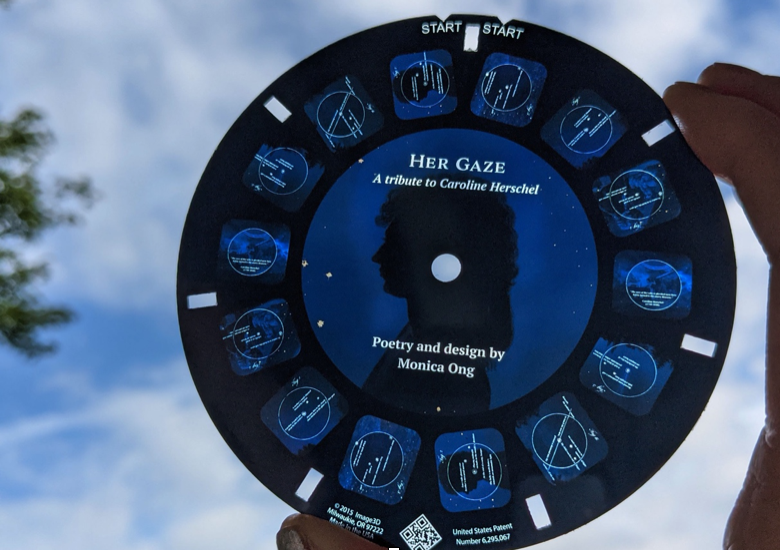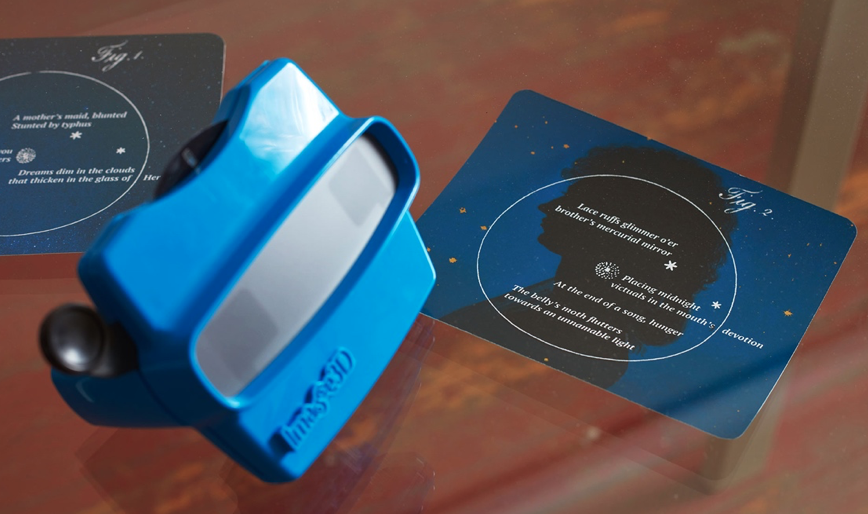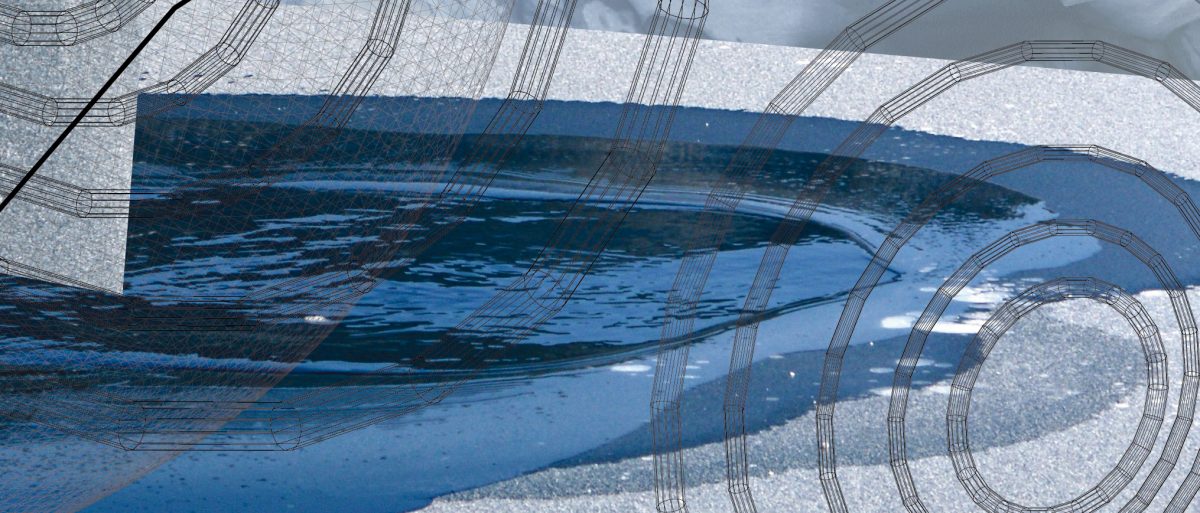Tab Journal has published several visual poems over the last two years. Perhaps because we use design thinking in our approach to poetry, we’re interested in the definitions, practices, and possibilities for poets who are consciously using visual elements to create meaning. Tab Communications Coordinator Lydia Pejovic talked with five visual poets for the March issue: Maria DeGuzmán, Kylie Gellatly, Monica Ong, Donna Spruijt-Metz, and Keith S. Wilson.
Here, she talks in further detail with Monica Ong.
Lydia Pejovic: Your piece “Her Gaze” in Volume 9, Issue 6, mixes images and ideas of women and astronomy. What made you decide to create visual poetry about women and our skies? How do these two topics intersect?
Monica Ong: “Her Gaze” is a tribute to the astronomer Caroline Herschel (1750–1848), who made important contributions to the field including the discovery of comets, and whose labor made possible the scientific achievements of her brother William Herschel. As a poet, I’ve always been interested in hidden histories, and while exploring stories of the sky and astronomy history, I’ve come across many stories not only of what we see in the sky but about who is looking, and wanted to celebrate Caroline, who deserves to be just as revered as her brother.
Lydia Pejovic: Can visual poetry be used to tell important histories? You’ve provided an image of “Her Gaze” that is in a three-dimensional form, different than the version in Tab Journal. Why is this the appropriate medium to do so?

Monica Ong: Visual poetry allows me to engage with archives and also interrogate the “gaze.” “Her Gaze” is built upon a set of sketches that Caroline Herschel made of Comet C/1786 P1 (Herschel), which she observed on August 1, 1786, between the constellations Ursa Major and Coma Berenices that became part the first paper by a woman to be read to the Royal Society.

Although the poem is published [in Tab Journal] as a set of images, the physical poem itself exists in the gallery as a reel that the reader views with a ViewMaster, taking an upward gaze. While this mimics the stance of stargazing, what is central the poem’s visual frame is the hand of a woman’s labor. My goal was to make visible the kind of labor that so often goes unseen and under-recognized, especially due to the social hierarchies of her time, not to mention the profession itself.
Lydia Pejovic: I was looking at “Her Gaze” in Tab Journal and noticed that you include words or phrases that exist outside of the circles on the page. How does playing with the ways in which we format language work to convey new meaning?
Monica Ong: In a way, I’m noticing how parts of a story get left outside the confines of the gaze. There are always people missing from the frame, especially in history, not to mention science history. At the same time, I also enjoy being playful with what a poetic line can be, especially when interacting with other elements like scientific diagrams. From a design standpoint, to confine all the text within the circle would feel flat and claustrophobic. I like the text to feel like it’s floating and sprawling, allowing the eye to wander into new patterns.
Next Up in Visual Poetry: Kelly Gellatly
